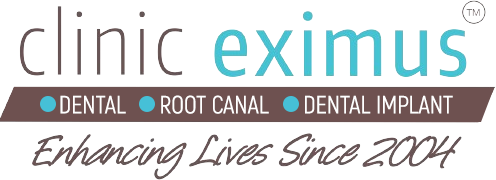When it comes to orthodontic treatment, the choice between invisalign vs traditional braces depends on multiple factors, including case complexity, patient compliance, and aesthetic preferences. Invisalign offers a discreet, removable alternative, making it a popular choice among adults and teens prioritizing aesthetics and convenience. On the other hand, traditional braces remain the gold standard for comprehensive corrections, particularly in severe malocclusions. While both methods are effective, their suitability varies based on individual needs.
This guide provides a professional comparison of these treatment options, helping patients and practitioners make informed decisions for optimal oral health and alignment outcomes.
Invisalign and Traditional Braces: Basis
When discussing is invisalign better than braces, understanding their fundamental differences is a good start.
Invisalign consists of clear, custom-made aligners designed to gradually shift teeth into alignment. These trays are removable, nearly invisible, and offer a discreet solution for orthodontic treatment. With no brackets or wires, Invisalign provides enhanced comfort and makes oral hygiene maintenance easier. However, patient compliance is key, as aligners must be worn 20–22 hours daily for effective results.
Traditional braces use metal brackets and wires fixed onto the teeth to apply continuous pressure for alignment. They remain the gold standard for complex cases, including severe crowding, bite issues, and rotations, offering precise and predictable results.
Invisalign vs Traditional Braces: Real Differences
When comparing invisalign vs traditional braces, several factors influence the decision. Here’s how they differ:
Appearance & Aesthetics—Invisalign offers clear, virtually invisible aligners, making it a preferred choice for those conscious of their smile. Braces, on the other hand, have visible metal brackets and wires, though ceramic options are available for a more discreet look.
Comfort & Convenience—Braces can cause initial discomfort due to metal components and periodic adjustments. Invisalign is smoother and removable, reducing irritation and offering flexibility in daily activities.
Treatment Duration—For mild to moderate cases, Invisalign can deliver results in 12–18 months. Braces, however, may take longer, especially for complex misalignments requiring precise movement.
Maintenance & Oral Hygiene—Since Invisalign is removable, it allows easy brushing and flossing, reducing plaque buildup. Braces, being fixed, require extra care to clean around brackets and wires to prevent cavities.
Food Restrictions—With braces, sticky, hard, and chewy foods must be avoided to prevent damage. Invisalign patients face no dietary restrictions since aligners are removed while eating.
Each option has its strengths—choosing the right one depends on the patient’s needs and compliance.
| Invisalign | Traditional Braces |
| Nearly invisible clear aligners | Visible metal or ceramic brackets |
| Smooth and removable, minimal irritation | May cause discomfort due to brackets and wires |
| Typically 12–18 months for mild to moderate cases | Longer for complex cases, varies by severity |
| Easy to clean, can brush and floss normally | Requires extra care to clean around brackets and wires |
| No dietary restrictions, aligners are removed before eating | Avoid sticky, hard, and chewy foods to prevent damage |
Invisalign vs. Traditional Braces: Which One Works Better?
When it comes to braces vs invisalign, effectiveness depends on the complexity of the case and patient compliance.
Mild to Moderate Cases—Invisalign works well for crowding, spacing, and minor bite corrections. Its custom aligners gradually shift teeth into position, offering a discreet and comfortable option.
Severe Misalignment & Bite Issues—Braces remain the gold standard for complex cases, including severe crowding, deep bites, open bites, and rotations. The fixed brackets and wires allow for precise and controlled movement.
Compliance Matters—Invisalign requires wearing aligners 20–22 hours daily for optimal results. Patients who frequently remove them may experience delayed or ineffective treatment. Braces, being fixed, work continuously without reliance on patient discipline.
Cost Comparison: Is Invisalign More Expensive?
One of the biggest concerns when choosing between Invisalign and traditional braces is the cost. The price of Invisalign braces in India typically ranges from Rs 1,50,000 to Rs 3,50,000, depending on case complexity, while traditional metal braces can cost between Rs. 35,000 to Rs. 1,50,000, with metal braces being the most affordable option. Factors affecting cost include:
- Severity of the Case—Complex corrections require longer treatment, increasing the cost.
- Clinic Location—Metro cities typically have higher pricing than smaller towns.
- Orthodontist’s Expertise—Highly experienced specialists may charge more for precision and expertise.
While Invisalign is costlier, its benefits in aesthetics and convenience often justify the price for many patients.
Which One is Right for You? How to Decide?
Choosing between invisalign vs traditional braces depends on individual needs, lifestyle, and budget. Here’s how to decide:
Best for Teens & Adults—If aesthetics matter, Invisalign is the preferred choice. Its nearly invisible aligners suit working professionals, teens, and those who want a discreet treatment option without metal brackets.
Best for Complex Cases—For severe misalignment, bite issues, and major corrections, traditional braces are more effective. They provide greater control and precision in shifting teeth into proper alignment.
Best for Budget Concerns—Braces are more affordable, making them the preferred choice for those looking for an effective yet cost-efficient orthodontic treatment.
Read more: Ceramic Braces vs Metal Braces: Cost Comparison in India
Conclusion
Both invisalign and traditional braces have their pros and cons. Invisalign offers discreet, comfortable, and removable aligners, while braces provide precise correction for complex cases at a lower cost. The right choice depends on your alignment needs, budget, and lifestyle. Consulting an experienced orthodontist is crucial to determining the best option.
If you’re considering treatment, Clinic Eximus offers expert care with advanced invisible braces in Delhi. Get a personalized consultation to find the perfect solution for your smile. Know the exact cost of invisible braces in Delhi—book your appointment today!


